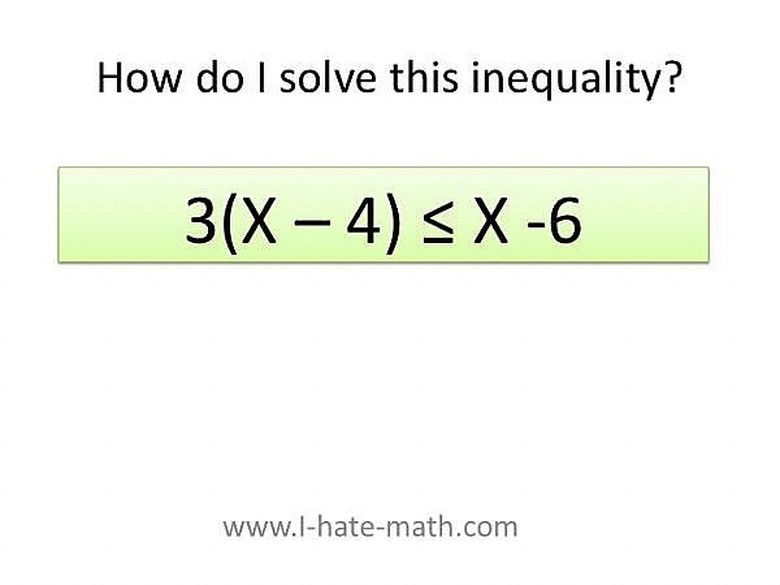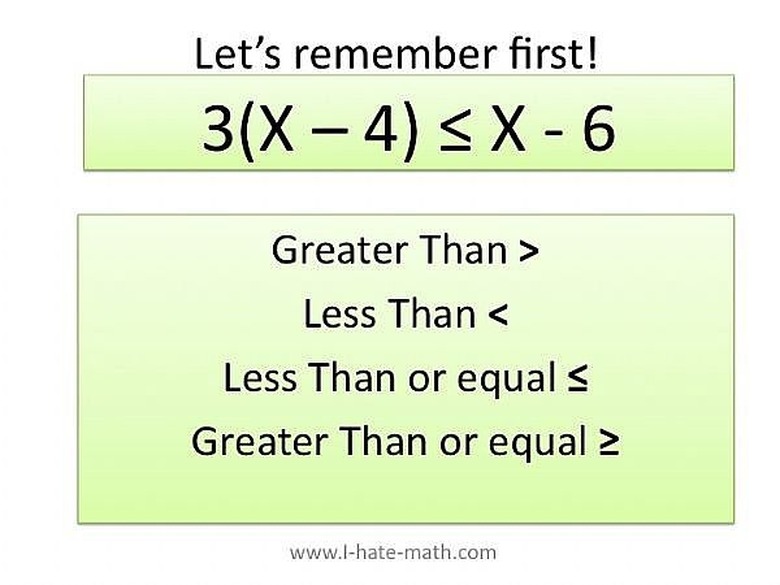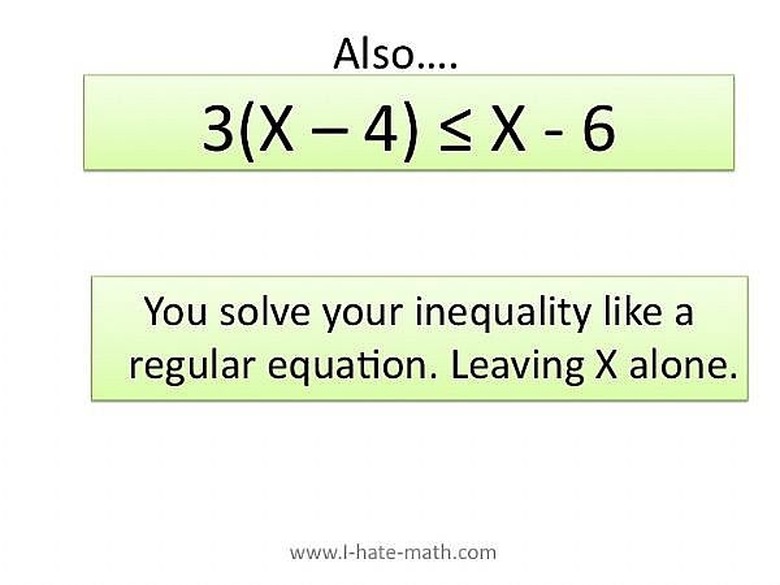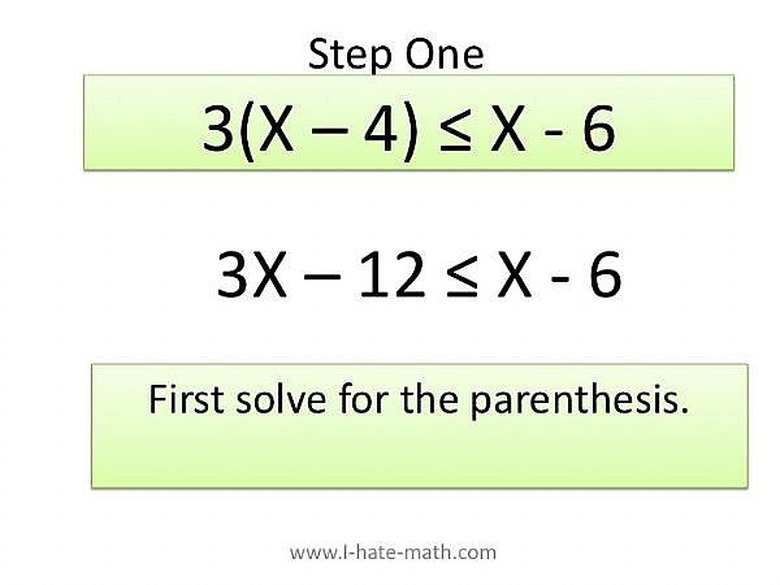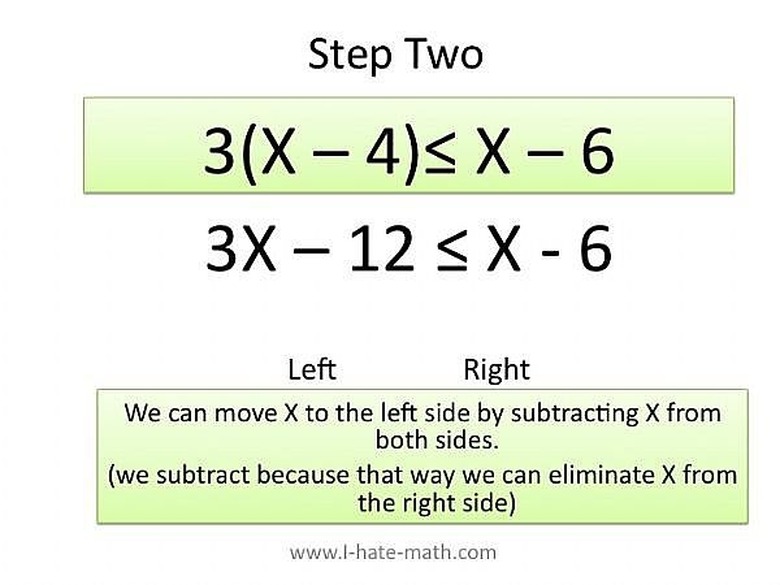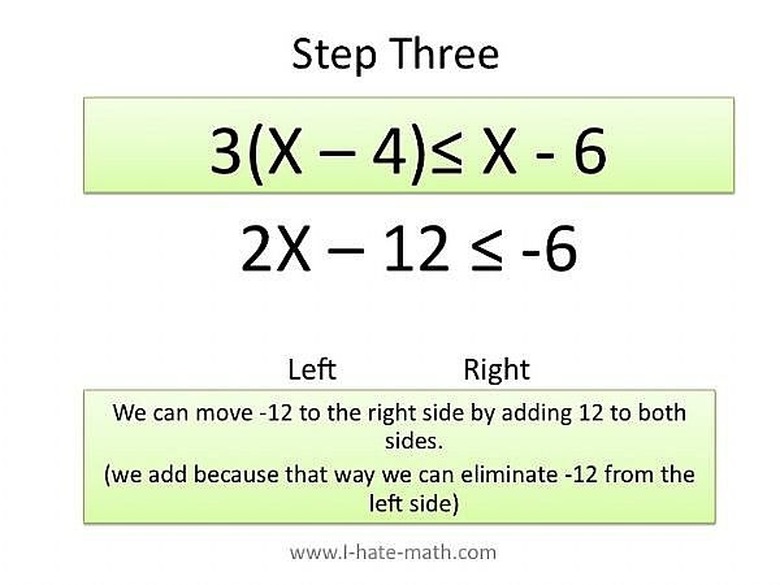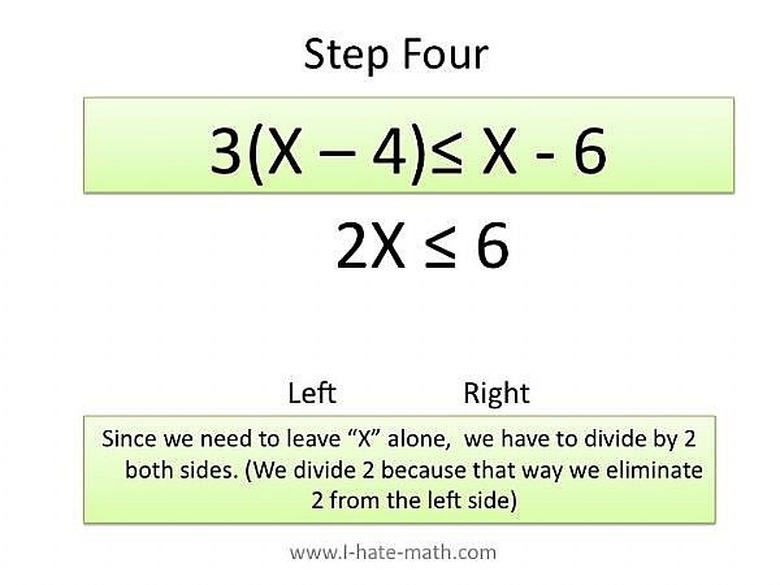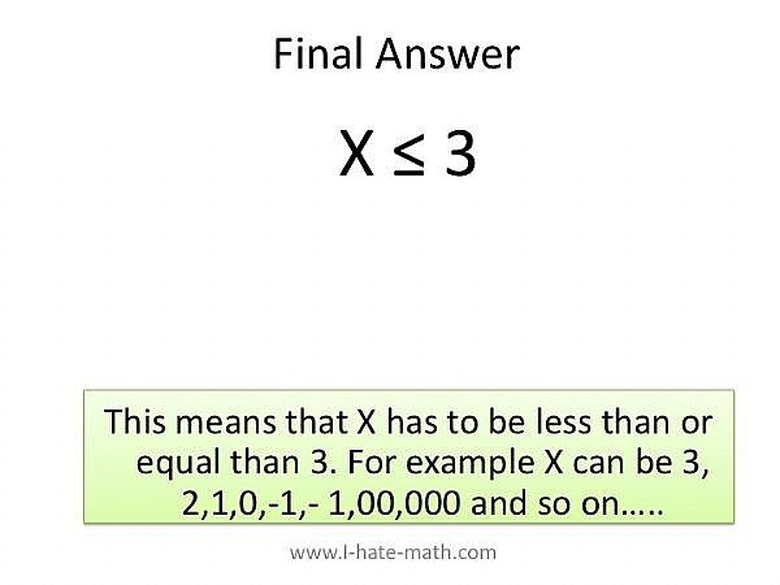How To Solve Inequalities
Inequalities are similar to equations, you have to solve for a variable (X, Y, Z , A, B, etc...), the main difference is that with an equation you are solving for only one value (X=3, Z=4, A=-9, etc) with an inequality you are solving for a range of numbers, that means that you variable can be a number greater than, less than, greater or equal than to, less or equal than to...
For Example: If X > 3 (X is greater than 3) , X can be any value from 3.1, 3.2, 5, 7, 900, 1000 and so on.
If you want to see this article as a video, please visit us at WWW.I-HATE-MATH.COM
Step 1
Let's remember the symbols for inequalities
Greater than >
Less than < Greater than or equal to ≥ Less than or equal to ≤
Step 2
We have the inequality 3(X-4) ≤ X – 6. Let's solve for "X" , that means to leave "X" alone. We can solve this like a regular equation.
Step 3
First we need to remember PEMDAS (Please Excuse My Dear Aunt Sally). We have to solve for the parenthesis. Let's multiply 3 times X, and 3 times -4
Step 4
Once we do the parenthesis, 3x – 12 ≤ X -6, let's move the "X" from the right to the left side, we do this by adding "X" to both sides.
Step 5
Our inequality looks like this 2X – 12 ≤ X -6. Now we have to move -12 from the left to the right side, let's add 12 to both sides.
Step 6
Our main goal is to leave "X" alone, 2 is multiplying X, let's eliminate him from the left side by dividing both sides by 2
Step 7
Our result is X ≤ 3, that means that the value of X has to be a number less than or equal to the number 3. For example 3, 2, 1, 0 -1, -2, -3 and so on. We can also write our answer like this (-∞, 3], we use always parenthesis for the infinitive symbol , and we use a bracket because our inequality is less than or equal to. If our equation was 3(X-4) < X -6, then our answer would be ( -∞, 3) with a parenthesis, this means that X can not be 3, it has to be less than 3, for example 2.99, 2.50, 0, -1, -2, -3 . Conclusion. If you have an inequality with the equal symbol (≤≥) , you have to use the bracket [], if you have the inequality without the equal symbol (<>), then you have to use parenthesis ()
Things Needed
- PEN
- PAPER
TL;DR (Too Long; Didn't Read)
Check our other articles about how to solve equations if you are having trouble solving for "X" Understand the inequality symbols If you divide by a negative number both sides, your inequality symbol will flip to the opposite side. For Example: -3X>6, -3X/-3 > 6/ -3, then X<-2, if you have doubts, just plug your answer and make sure makes sense, in our example X has to be less than -2 , so -3(-3) > 6, 9> 6, if you do not flip the inequality then your answer would be wrong.
Cite This Article
MLA
Contributor, . "How To Solve Inequalities" sciencing.com, https://www.sciencing.com/solve-inequalities-4859538/. 24 April 2017.
APA
Contributor, . (2017, April 24). How To Solve Inequalities. sciencing.com. Retrieved from https://www.sciencing.com/solve-inequalities-4859538/
Chicago
Contributor, . How To Solve Inequalities last modified March 24, 2022. https://www.sciencing.com/solve-inequalities-4859538/
